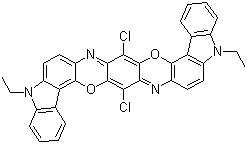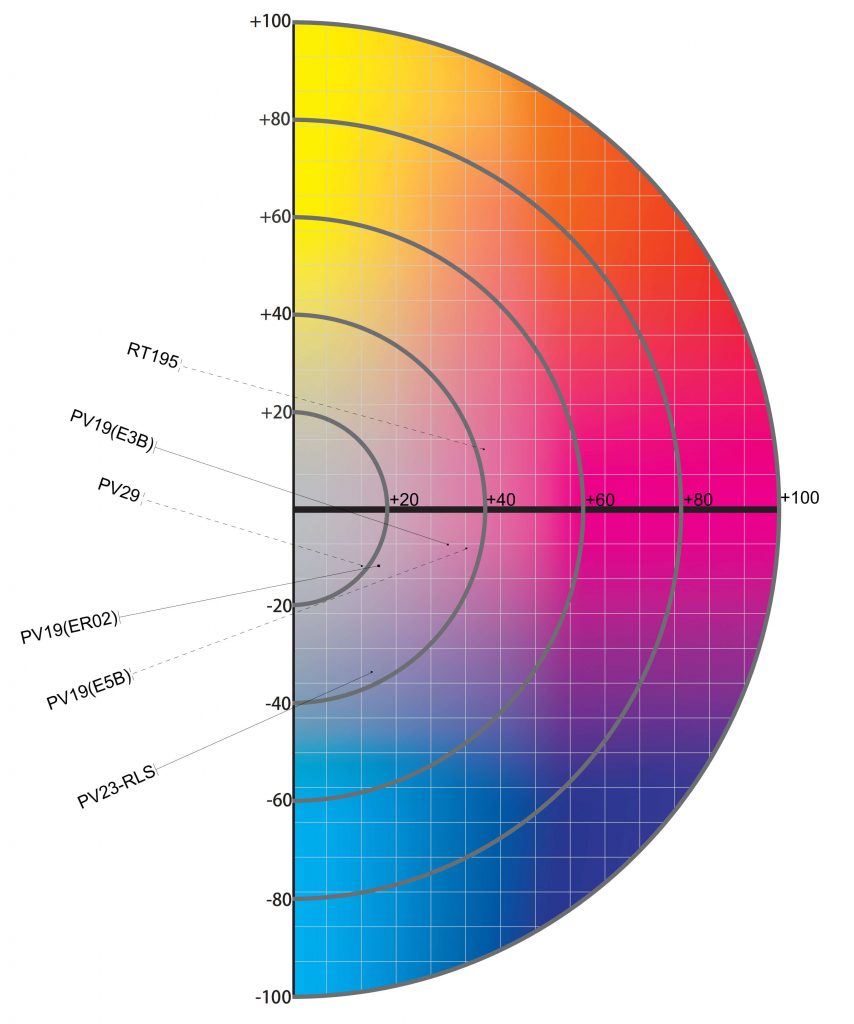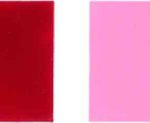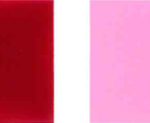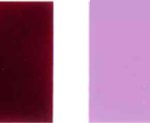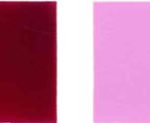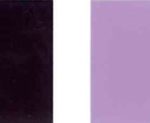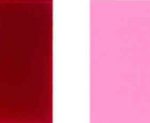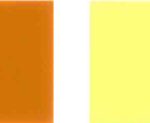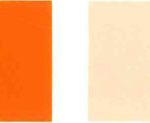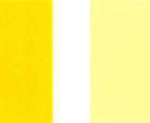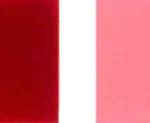Ang pigment violet 23-Corimax Violet RLS
Pigment violet 23 is an organic compound that is a commercial pigment. It is member of the dioxazine family of heterocyclic compounds, but derived from carbazoles. It is prepared by condensation of chloranil and 3-amino-N-ethylcarbazole. It has a centrosymmetric angular structure. For many years, the structure was assigned, incorrectly, as having a "linear structure" (EC no. 228-767-9, CAS RN 6358-30-1) which differ in terms of the carbazole ring fusion.
Pigment violet 23 is prepared by condensation of an aniline with chloranil.[From Wiki]
Teknikal na mga parameter ng pigment violet 23
| Kulay ng Index Blg. | Ang kulay ng lila ay 23 |
| Pangalan ng Produkto | Corimax Violet RLS |
| Kategorya ng Produkto | Organikong Pigment |
| Banayad na Bilis (patong) | 7 |
| Ang paglaban sa init (patong) | 200 |
| Light Fastness (plastic) | 7 |
| Ang paglaban sa init (plastic) | 250 |
Kulay | 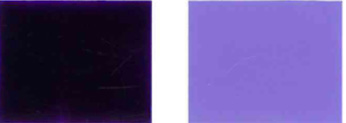 |
| Pamamahagi ng hue |
Zeyachem is a global supplier of Dioxazine Violet pigments that provide a bluish violet shade, a color not obtainable by other pigments.
The extremely high color strength of Pigment violet 23 makes it a suitable pigment as a shading component. PV23 also exhibits excellent heat fastness and light fastness properties, making it suitable for inks and many paints and coatings applications.
Corimax Violet RLS is a reddish blue shade Dioxazine Violet (PV23) pigment with very high color strength and excellent overall fastness properties, suitable for inks, paints and coatings, including industrial coatings, powder coatings and automotive coatings.
Mga Tampok:
low viscosity, high gloss, high color strength. Pigment Violet 23 is a transparent purple violet pigment with high saturation and tinting strength.
C.I.Pigment Violet 23 show good tinting strength in flexible PVC while poor resistance to immigration.
P.V.23 heat resistance above 230℃ in polyolefins, when used in transparent PS, temperature shall below 220℃, above this PV 23 shall decompose. When worked in polyester, it is 280℃ stable in 5 hours, while concentration shall above 0.05%.
The pigment is easy to use and requires no rinsing. To ensure maximum color intensity and proper adhesion to the pulp, a retention agent must be added to the pulp before the pigment is applied. Our pigments are supplied by volume sizes. The actual weight varies, depending upon the density of the pigment.
Application:
Inirerekomenda para sa mga pintura ng automotibo, coatings ng arkitektura, coil coatings, pang-industriya na pintura, coatings ng pulbos, paste ng pag-print, PVC, goma, PS, PP, PE, PU, offset inks, water-based inks, solvent inks, UV inks.
Pigment Violet 23 (PV 23) has now been around for more than 55 years. Its beginnings go back to 1928, when a patent was filed for the pigment after researchers at the Hoechst company in Germany first undertook the multistage synthesis based on carbazole, an ingredient of coaltar, and chloranile. Until the end of World War II the pigment was only used to process diamine light blue, a direct dyestuff for cotton.
With the invention of reactive dyes, which considerably simplified the dyeing and printing process for cellulose fibers, this application lost its importance. A new and promising use for PV 23 was quickly found due to the pigment’s ability to produce unique colors.
PV 23 has been used as a pigment since 1953. PV 23 belongs to the group of high-performance polycyclic pigments (HPP’s) that are used whenever the requirements for a colorant are particularly high. These include high light fastness and weather fastness, fastness to solvents, and heat stability. In addition, PV 23 stands out by its high coloring power. Under the electron microscope, the crude violet shows a highly granular crystalline form, whereas the pigment particles are miniscule.
———————————————————— - ———————————————
Kaugnay na Impormasyon
Mga katangian ng pisikal at kemikal:
Hue o ilaw: asul na lila
Relatibong density: 1.40-1.60
Maramihang density / (lb / gal): 11.7-13.3
Punto ng pagkatunaw / ℃: 430-455
Average na laki ng butil / μm: 0.04-0.07
Particle na hugis: kubiko / baras
Tukoy na lugar ng ibabaw / (m2 / g): 45-102
halaga ng pH ((10% slurry): 6.2
Paggamit ng produkto:Ang pigment violet 23 ay pangunahing ginagamit para sa pangkulay ng mga coatings, inks, rubbers at plastik, at din para sa pangkulay ng mga synthetic fibers
Mayroong 124 uri ng mga komersyal na tatak ng pagbabalangkas ng pigment. Ang Carbazoazine ay isang uri ng asul na kulay ng lila na may malakas at hindi pangkaraniwang aplikasyon, at ang tiyak na lugar ng ibabaw ng monolite violet RN ay 74m2 / g. Malawakang ginagamit ito sa iba't ibang larangan tulad ng patong, pag-print ng tinta, plastik at pag-print ng tela at pagtitina. Ito ay may mahusay na bilis ng barnisan kapag pangkulay. Maaari itong magamit para sa pagpapalamig ng hangin sa pintura, pintura ng sasakyan ng OEM at pintura sa pagluluto, lalo na para sa latex na pintura na may toneladang CuPc at malakas na tono ng ilaw. Maaari itong magamit para sa pangulay ng plastik, na may resistensya ng init na 280 ℃ sa polyolefin at mataas na pagpapanatili ng kulay (0.07% lamang ang konsentrasyon ng pigment para sa HDPE na may 1 / 3SD); maaari din itong magamit para sa Pangkulay ng polyester at PE.
Prinsipyo ng sintetikong: Ang Carbazole ay ginagamit bilang isang hilaw na materyal, at ang N-etilasyon ay isinasagawa sa ilalim ng normal na presyon sa pagkakaroon ng isang katas ng pagbabalik sa phase, at isang reaksyon ng nitration at isang reaksyon ng pagbawas ay ginanap upang synthesize ang 2-amino-N-ethylcarbazole; Ang 3,5,6-tetrachloroparaquinone (Chloranil) ay sumasailalim sa kondensasyon at mga reaksyon ng ring-pagsasara, na-filter, hugasan ng tubig, at tuyo upang makakuha ng isang krudo na carbazole violet; sa wakas, pangkalahatang paggamot sa pigmentation sa pamamagitan ng pagmamasa o pagmamasa upang makakuha ng CI pigment violet 23.
mga aliases:Pigment Violet RL; 51319; C.I. Pigment Violet 23; 8,18-Dichloro-5,15-diethyl-5,15-dihydrodiindolo(3,2-b:3',2'-m)tri- phenodioxazine; CI 51319; Diindolo(3,2-b:3',2'-m-)triphenodioxazine, 8,18-dichloro-5,15-diethyl-5,15-dihydro-; Carbazole Dioxazine Violet; Carbazole Violet; Chromofine Violet RE; Cyanadur Violet; Dioxazine Violet; Dioxazine purple; EB Violet 4B7906; EMC Violet RL 10; Fastogen Super Violet RN; Fastogen Super Violet RN-S; Fastogen Super Violet RTS; Fastogen Super Violet RVS; Helio Fast Violet BN; Heliofast Red Violet EE; Heliogen Violet; Heliogen Violet R Toner; Hostaperm Violet RL; Hostaperm Violet RL Special; Hostaperm Violet RL Special 14-4007; Lake Fast Violet RL; Lake Fast Violet RLB; Lionogen Violet R 6100; Lionogen Violet RL; Lionol Violet HR; Monolite Fast Violet R; PV Fast Violet BL; PV Fast Violet RL-SPE; Paliogen Violet 5890; Paliogen Violet L 5890; Permanent Violet; Permanent Violet R; Sandorin Violet BL; Sanyo Permanent Violet BL-D 422; Sumikacoat Fast Violet RSB; Sumitone Fast Violet RL; Sumitone Fast Violet RL 4R; Sumitone Fast Violet RLS; Symuler Fast Violet BBL; Symuler Fast Violet BBLN; Unisperse Violet B-E; Vynamon Violet 2B; 8,18-Dichloro-5,15-diethyl-5,15-dihydrodiindolo(3,2-b:3',2'-m)triphenodioxazine; Diindolo(3,2-b:3',2'-m)triphenodioxazine, 8,18-dichloro-5,15-diethyl-5,15-dihydro-; 8,18-dichloro-5,15-diethyl-5,15-dihydrocarbazolo[3',2':5,6][1,4]oxazino[2,3-b]indolo[2,3-i] phenoxazine
Molekular na Istraktura: